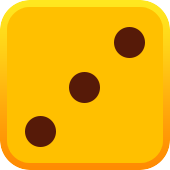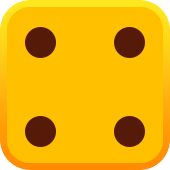












This timeless card game ranks among the top casino favorites globally, admired for its mix of luck and strategy. Grasping the odds is vital for those aiming to boost their chances of winning and minimize the house advantage. The game is fundamentally based on probabilities, with players competing against the dealer to achieve a card combination likelihood that sums to 21 or below while outperforming the dealer’s hand without exceeding the limit.
The game’s appeal lies in its strategic depth. While luck affects the cards dealt, players who understand the odds on blackjack and apply smart tactics can improve their expected return rate significantly. This comprehensive guide explores probability charts, subtle house advantage factors, and payout structure analyses to offer a clear understanding of how odds influence the gameplay experience.
Blackjack odds can be broken down into various measurable components, each influencing the player’s decision-making process. The odds table below outlines the probability of receiving certain card combinations, which directly affect player winning chances and overall strategy.
|
Hand Total |
Probability (%) |
Odds of Busting (%) |
Double Down Success Rate (%) |
|
11 |
13.3 |
0 |
58 |
|
10 |
12.5 |
0 |
55 |
|
9 |
11.9 |
0 |
44 |
|
16 |
7.7 |
62 |
0 |
|
12 |
8.6 |
31 |
0 |
|
13 |
7.9 |
39 |
0 |
|
17 |
6.7 |
26 |
0 |
|
20 |
5.5 |
0 |
0 |
|
21 |
4.8 |
0 |
0 |
|
15 |
8.0 |
58 |
0 |
|
14 |
7.4 |
46 |
0 |
|
18 |
6.0 |
17 |
0 |
|
19 |
5.2 |
0 |
0 |
This expanded odds table provides insights beyond just hitting 21 or busting. For example, the double down success rate fluctuates based on hand totals and dealer cards, influencing your decisions. Knowing the odds blackjack players face helps calculate expected return rates and manage risk.
Additionally, understanding the tie outcome probability can guide betting strategies. While ties are less frequent than wins or losses, they still affect variance in hands and bankroll management. Recognizing these statistics allows players to approach the game with a clear perspective on risk versus reward.
One of the main goals in this card game is reaching 21, which usually offers the highest payout. The odds of hitting 21 depend on the cards you currently hold, the dealer’s visible card, and the remaining deck composition.
|
Current Hand Value |
Probability of Hitting 21 (%) |
Odds on Blackjack |
Card Combination Likelihood (%) |
|
11 |
31.5 |
1 in 3.2 |
13.3 |
|
10 |
24.8 |
1 in 4 |
12.5 |
|
9 |
21.7 |
1 in 4.6 |
11.9 |
|
8 |
19.5 |
1 in 5.1 |
11.3 |
|
7 |
16.8 |
1 in 6 |
10.7 |
|
6 |
14.2 |
1 in 7 |
10 |
|
5 |
12.1 |
1 in 8.3 |
9.6 |
|
4 |
10.3 |
1 in 9.7 |
9 |
|
3 |
8.9 |
1 in 11.2 |
8.5 |
This table demonstrates that the likelihood of hitting 21 diminishes as the starting hand value decreases. Players should weigh these blackjack odds carefully against the dealer bust frequency and their own odds of busting to make informed decisions on whether to hit or stand. The tie outcome probability also comes into play when players approach 21 but don’t surpass it. Knowing how often ties occur with the dealer helps prepare for less profitable rounds, influencing betting and doubling down decisions.
The house edge percentage is a key measure of the casino’s advantage over players. In this card game, the edge is relatively low compared to other casino games, making the odds particularly attractive for many players.
Typical house edge percentages vary depending on the rules and number of decks but usually range between 0.5% and 1.5%. This small edge means the expected return rate for players can reach as high as 99.5% when applying basic strategy correctly.
However, without the proper use of strategy, the house edge percentage can rise dramatically. Players unfamiliar with odds for blackjack or who deviate from optimal play increase the casino’s advantage. Even minor changes in rules or misplays can increase the variance in hands and decrease player winning chances.
Comparing single deck to multi-deck games reveals how the number of decks influences blackjack odds card distributions and player success rates. Single deck games tend to offer better odds due to simpler card counting and more predictable card combination likelihoods.
With more decks, the odds table shifts, affecting the payout ratio breakdown and increasing the casino’s advantage. Players should always consider the number of decks when choosing a table, as this factor significantly impacts the odds and outcomes.
Rule variations significantly impact the house edge percentage and player winning chances in the game. Different casinos implement varying rules that can shift blackjack casino odds in subtle or significant ways. Below is an expanded table reflecting these variations and their effects:
|
Rule Variation |
House Edge Impact (%) |
Effect on Player Winning Chances |
Notes |
|
Dealer hits soft 17 |
+0.2 |
Lowers player advantage |
Makes dealer bust frequency less |
|
Doubling after split allowed |
-0.15 |
Improves player advantage |
Increases double down success rate |
|
Surrender option available |
-0.08 |
Reduces losses |
Allows player to minimize risk |
|
Number of splits (up to 3) |
-0.1 |
Slight improvement |
More flexibility in play |
|
Blackjack payout 6:5 |
+1.4 |
Significantly worsens odds |
Reduces payout ratio breakdown |
|
Resplitting aces allowed |
-0.03 |
Minor improvement |
Slightly better card combination likelihood |
These rules alter the odds in different ways. For example, a dealer hitting soft 17 increases the house edge percentage slightly, while allowing doubling after splitting hands improves the expected return rate for the player. Understanding these nuances can turn the tide in favor of informed players.
Using a solid strategy is essential for improving casino odds in this card game. Basic strategy blackjack odds are derived from mathematically optimized decisions that reduce the house edge percentage and maximize the player winning chances. Below are additional elements to expand strategic understanding:
A detailed blackjack odds table reflecting these strategies includes:
|
Action |
When to Apply |
Impact on House Edge (%) |
Player Winning Chances Improvement |
|
Split Aces |
Always |
-0.12 |
+2% |
|
Double on 11 |
Against dealer 2-10 |
-0.10 |
+1.8% |
|
Stand on 12 |
Against dealer 4-6 |
-0.06 |
+1.2% |
|
Surrender 16 |
Against dealer 9, 10, or Ace |
-0.08 |
+1.5% |
Understanding the payout ratio breakdown is essential for grasping how much each winning hand can yield. A natural 21 usually pays 3:2, providing the best blackjack odds and the highest expected return rate.
Common payout scenarios include:
The payout ratio breakdown affects how players weigh risk and reward. For example, a payout of 6:5 instead of 3:2 notably worsens player odds and raises the house edge percentage, making the game less favorable. Looking for a great no-deposit bonus? Check out the latest offer now!




